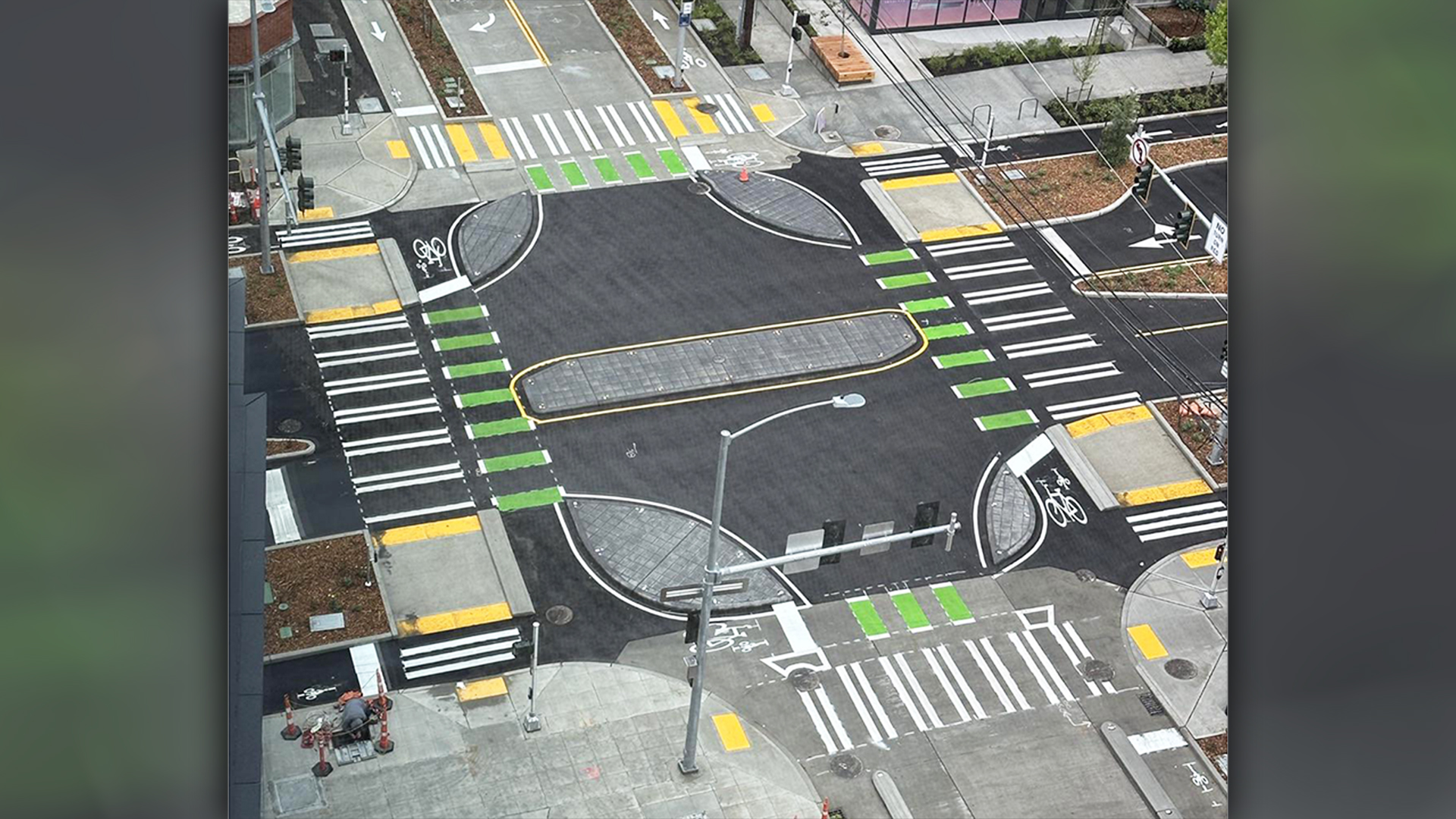

Before the invention of the wheel and sliced bread, we got around by walking, crawling, galloping via an animal with more legs than we had — whatever it took. Venturing out for food and shelter is necessary for survival, man. That won’t change. What has changed is how we travel.
Legs and wheels are still a mode of transport, of course, but today’s combo of getting around involves many shapes, sizes, and speeds. Which is good! And bad. Because one-size-fits-all doesn’t apply to every road and byway. “But, dammit, we’re going to try!” said the Dutch.
The who? The Dutch. Who did what? Develop the protected intersection. The what? An innovative road design that completely separates pedestrians and cyclists from vehicular traffic. The layout also adds corner islands, which force drivers to slow the f— down.
This element of infrastructure design has been permeating worldwide for some time now, but it’s been starting to show up more Stateside in recent years.
Amsterdam has nearly 250 miles of bike paths, and the Netherlands as a whole has more bikes than people. But crashes between cars and cyclists (and everything, really) happen everywhere, sometimes with fatal results. The Dutch-style junction isn’t a European exclusive. Some U.S cities have already given the unconventional layout a try, and the hits don’t lie because there are fewer of them.

According to the National Association of City Transportation Officials (NACTO), a New York study found fewer car-cyclist conflicts occurred at protected intersections compared to those with a dedicated turning lane and specific bike signals. The transportation association also noted that Dutch-style design resulted in 98% of drivers yielding to cyclists and 100% of them yielding to pedestrians. Hold your horses, indeed.
The design is a lot to take in at first. Like something out of an AI-generated board game for civil engineers. But its initial complexity actually adds to its flexibility. A protected intersection, or a variation of it, can be implemented at any city junction. And the busier, the better.
It’s a bit of a backtrack from the “share the road” motto. However, by not forcing bikers to turn left or merge into mixed traffic, protected intersections actually increase their visibility to drivers. The U.S. Department of Transportation highlights the benefits in the video below:

Corner islands are a significant design element of protected intersections because they create a bicycle queue area. At a traditional intersection, cyclists would wait on the road alongside cars. And their positioning could be anywhere from before, at, or ahead of the corner. At a protected junction, the islands force cars to go around the new safety zone.
In the images, the islands look like a tight turn. That’s because they are, which is why drivers hit the brakes (or should). NACTO states that the corner island radii should be small enough to keep cornering speeds to less than 10 mph. To accommodate large vehicles like trucks, a mountable override area can be added. Now if only there was a fix for stupidity because where there’s a will, there’s a way to abuse that lower corner surface.

Protected intersections are not just for massive metro areas either. College towns and vacation destinations with a large amount of pedestrian traffic would also benefit. In fact, it was College Station, Texas, home of Texas A&M University, that constructed the first non-signalized variant in the U.S. The year prior, Austin, Texas, built a couple of protected intersections within its city limits, with more proposed. Recent builds include San Luis Obispo on California’s Central Coast, which installed one in 2022. This year, Seattle installed its first-ever protected intersection, while Eugene, Oregon, will see the completion of its inaugural Dutch-style junction in August.
Here’s an animation of how traffic flows at Seattle’s protected intersection:

Although the primary focus is to offset bicycle traffic from vehicle traffic, the separated berth provides additional protection and safety for pedestrians, strollers, wheelchairs, etc. Hopefully, the slower speeds and higher visibility will continue to minimize collisions and injuries. We gotta share the road one way or another.